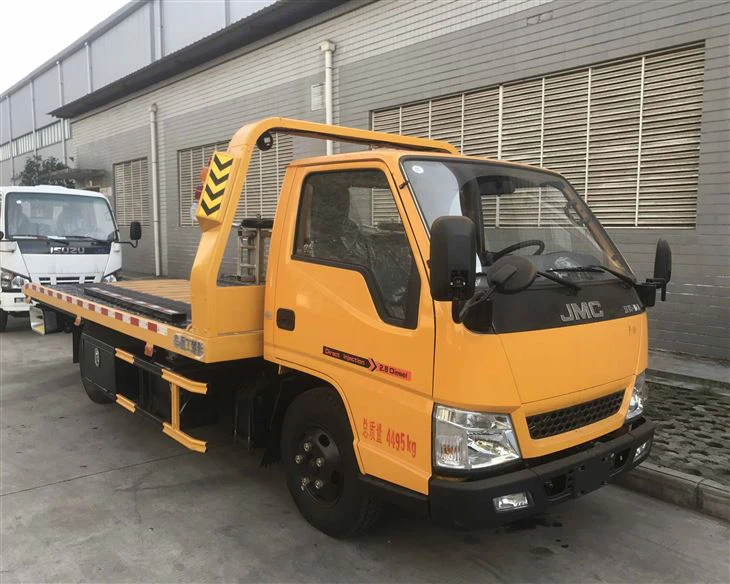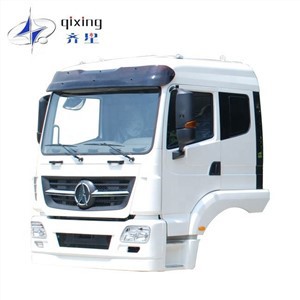Capital City Trucks: A Comprehensive Guide to Urban Freight Transport

Introduction
In bustling metropolitan areas, the efficiency and effectiveness of freight transport play a crucial role in the smooth operation of economies. Capital city trucks are at the heart of urban logistics, providing essential services to businesses, governments, and citizens. This article delves into the various aspects of capital city trucks, including their types, challenges faced in urban environments, regulations governing their use, and tips for optimizing their operations. With a focus on case studies and practical insights, this guide aims to provide a deep understanding of how these vehicles contribute to urban life.
The Importance of Capital City Trucks
Capital city trucks are vital for the movement of goods within metropolitan areas. They facilitate commerce and support businesses by ensuring timely delivery of products and services. In addition to their role in logistics, they also help reduce traffic congestion and pollution through efficient delivery practices.
Economic Contributions
Capital city trucks connect various economic sectors. Their contributions can be categorized as follows:
- Facilitating e-commerce and online retail deliveries.
- Supporting local businesses with timely supplies.
- Creating jobs in logistics and transportation sectors.
Environmental Considerations
The impact of capital city trucks on the environment is significant, requiring strategies to mitigate pollution and optimize fuel efficiency. Many cities are focusing on:
- Implementing low-emission zones.
- Adopting electric and hybrid trucks.
- Encouraging smart routing to reduce travel distances.
Types of Capital City Trucks
Understanding the types of trucks used in capital cities can help stakeholders make informed decisions about urban logistics.
Light-duty Trucks
Ideal for smaller deliveries, light-duty trucks are commonly used in urban settings. Examples include:
- Delivery vans
- Small box trucks
- Pickup trucks
Medium-duty Trucks
Medium-duty trucks strike a balance between payload capacity and maneuverability. They are suited for:
- Larger deliveries
- Food and beverage distribution
- Construction materials transport
Heavy-duty Trucks
Heavy-duty trucks are designed for transporting large volumes of goods over longer distances. While they are less common in congested urban areas, they are essential for:
- Intercity freight transport
- Construction site deliveries
Challenges Facing Capital City Trucks
Despite their importance, capital city trucks face several challenges that impact their efficiency and effectiveness.
Traffic Congestion
The prevalence of traffic congestion in capital cities leads to delays in deliveries. Solutions include:
- Optimizing delivery schedules
- Using real-time traffic data for route adjustments

Regulatory Constraints
Many cities impose strict regulations on truck operations, including:
- Size and weight limits
- Restricted operating hours in specific zones
Safety Concerns
Trucking in urban environments presents safety risks for both drivers and pedestrians. Effective strategies to enhance safety include:
- Training programs for drivers
- Utilizing advanced collision avoidance technologies
Regulations Governing Capital City Trucks
Understanding the regulations that govern capital city trucks is essential for compliance and efficient operation.
Licensing and Permits
Trucking companies must obtain various licenses and permits to operate within city limits. These may include:
- Commercial driver’s licenses (CDLs)
- Special permits for oversized loads
Environmental Regulations
Regulations aimed at reducing emissions have become more prevalent. Key regulations include:
- Emission standards for diesel and gasoline engines
- Incentives for electric vehicle adoption
Best Practices for Urban Truck Operations
Optimizing truck operations in capital cities can lead to substantial benefits for businesses and residents alike.
Efficient Route Planning
Using advanced route planning software can help ensure timely deliveries. Key considerations include:
- Identifying traffic patterns
- Avoiding construction zones
Technology Integration
Harnessing technology can enhance operational efficiency. This includes:
- Implementing GPS tracking
- Utilizing mobile apps for logistics management
Staff Training
Training personnel thoroughly ensures that best practices are observed. This encompasses:
- Driver safety training
- Load management education
Case Studies of Successful Truck Operations in Capital Cities

Examining successful case studies can provide valuable insights into effective trucking operations.
Case Study: New York City
New York City has implemented a “Mayor’s Office of Freight Mobility” aimed at improving freight delivery. Some initiatives include:
- Creating freight-friendly zones
- Offering incentives for cleaner vehicles
Case Study: London
London has addressed congestion issues through its “Ultra Low Emission Zone” (ULEZ), promoting:
- Adoption of electric trucks
- Restrictions on older, polluting vehicles
Future Trends in Urban Freight Transport
The future of capital city trucks is likely to be shaped by several trends impacting logistics and freight transport.
Adoption of Electric Vehicles

The push for sustainability is leading to the increased adoption of electric trucks in urban settings. Benefits include:
- Reduction of greenhouse gas emissions
- Lower operating costs
Last-Mile Delivery Innovations
As the demand for fast delivery continues to rise, companies are exploring innovative last-mile delivery solutions, such as:
- Delivery drones
- Autonomous delivery vehicles
Integration of Smart City Technologies
Smart city initiatives are enhancing freight logistics through technologies such as:
- Traffic management systems
- IoT solutions for real-time monitoring
FAQs About Capital City Trucks
What are capital city trucks used for?
Capital city trucks are primarily used for transporting goods within metropolitan areas, facilitating deliveries for businesses and local services.
How do urban regulations affect capital city trucks?
Urban regulations can impose restrictions on size, weight, emissions, and operating hours, impacting how and when trucks can operate in cities.
What are the benefits of using electric trucks in urban areas?
Electric trucks produce lower emissions, contribute to improved air quality, and typically have lower fuel and maintenance costs compared to traditional trucks.
How can logistics companies improve delivery times in congested cities?
Logistics companies can improve delivery times by optimizing routes, utilizing traffic data, and employing technology to streamline operations.
What challenges do capital city trucks face regularly?
Challenges include traffic congestion, strict regulations, safety concerns, and environmental impacts related to emissions.
Are there incentives for companies using eco-friendly trucks?
Many cities offer incentives such as grants, tax breaks, or access to restricted zones for companies that use low-emission or electric trucks.
